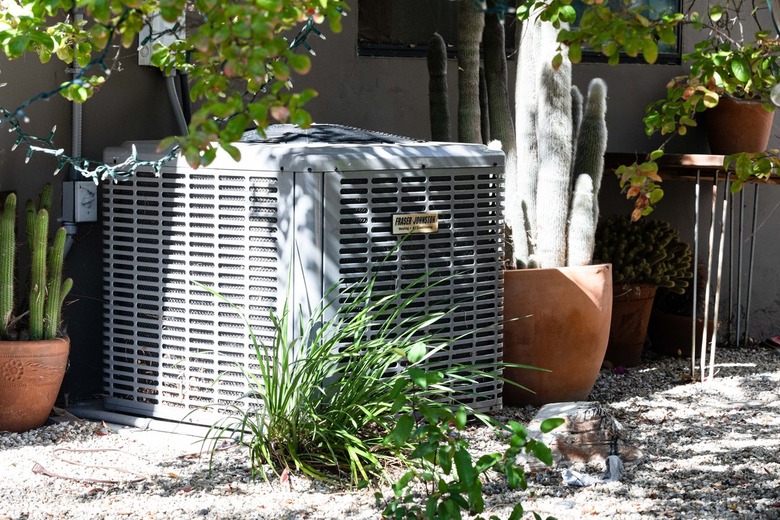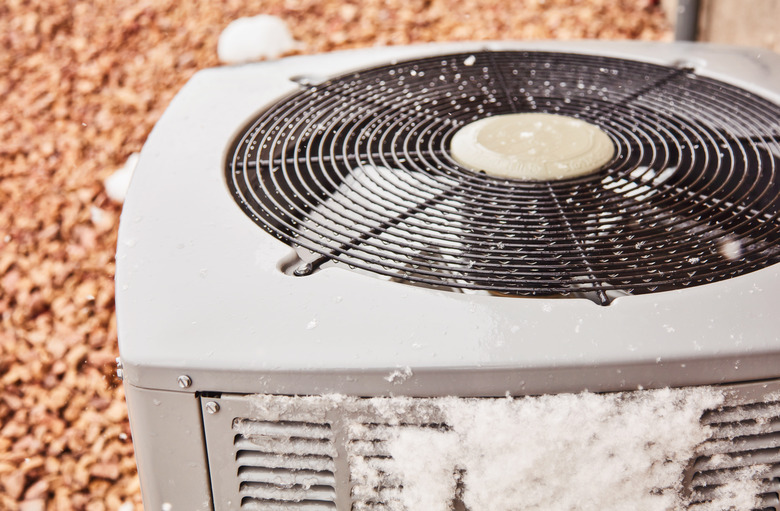This Simple Tip Would Have Prevented My A/C From Going Out
It is a truth universally acknowledged that an air conditioner will go out only when you need it most — like on one of the hottest days of the year. After dropping off my daughter at school one morning, I unfortunately discovered my outdoor air conditioning unit was no longer spinning and therefore not producing cool air in my home.
Though I live in the Midwest where the summers are largely bearable, this occurred during a week when the temperatures were set to soar to 95 degrees Fahrenheit. Dripping sweat, I frantically called a local HVAC professional and scheduled a service visit.
After a $150 service call and $300 for a hotel stay (not to mention around $150 in fans I panic purchased at Home Depot), my HVAC pro informed me that the capacitor on the outdoor unit (the essential piece that gives the motor a jolt of power) had blown due to a buildup of fluffy cotton from our cottonwood tree. What could have prevented this, he said, was so simple I almost cried. To prevent damage to the crucial parts of the outdoor unit, all you need to do is rinse it with a hose twice a year.
Are you woefully behind on air conditioner maintenance as I was? Here's how to ensure you learn from my costly (and hot) mistake.
How to Clean an Outdoor Air Conditioning Unit
How to Clean an Outdoor Air Conditioning Unit
1. Turn Off the Power to the Air Conditioning Unit
You can safely turn off the power at a disconnect switch near the unit itself or at the circuit breaker in your home's breaker box. Look for a metal box mounted to a house wall near the A/C unit; there will be an electrical cable running from the box to the unit. The disconnect switch is inside the box. Depending on the type of switch you have, you may turn off the power by simply flipping it from on to off. If the switch has a pull-out head, pull out the plastic head from the socket and then flip it upside down and plug it back in (the word "off" will be visible when the head is properly in place).
If there is no disconnect switch near the unit, find the air conditioner circuit breaker inside your breaker box and flip the breaker switch to the off position. This will be a big (double-pole) breaker with a long handle.
2. Open the Top of the Unit
Remove the screws or bolts securing the top panel of the A/C unit. Lift the top and carefully set it aside. It may have fan wiring connecting it to the unit interior; if so, position the top assembly so as not to stress the wiring.
3. Clean the Unit Interior
Remove leaves and other debris from inside the unit, being careful not to touch any wiring or other electrical components. You can also clean the area with a shop vac and hose extension.
4. Spray the Coil
Screw a nozzle sprayer onto a garden hose and put it on a medium pressure setting; excessive water pressure can damage the thin metal fins of the coil — the radiatorlike structure surrounding the unit interior. Spray the fins with water from the inside out, working from the top down to remove dust and debris. If desired, you can apply a coil cleaning product before rinsing per the product instructions.
Tip
The fins are made of very thin aluminum that bends easily, and they don't work as well when they're bent. You can straighten bent fins with a fin comb, but if they're badly damaged, you should call a pro.
5. Clean the Outside
Clean the outside of the unit with a light spray of water. Reposition the unit's top panel and secure it with its screws or bolts. Let the unit air dry.
6. Restore Power to the A/C Unit
Restore power to the unit by turning on the disconnect switch or flipping the pull-out head and reinserting it in the on position as applicable. Be sure to close and secure the door of the switch box. If you used the circuit breaker to cut power, flip the breaker back to the on position and close the breaker box door.
Tip
Be sure to schedule an annual A/C tune-up with a professional HVAC company. This will ensure your entire unit stays in tip-top shape, and your air conditioner will be more energy efficient.

